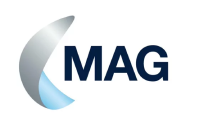Upfront payment is typically provided to labels and publishers for the use of the music. This can also include music royalties within the moving image production. Ed Sheeran co-writes his own songs but also writes for other artists such as One Direction therefore he has a music publishing agreement as well as a record deal. An artist’s image is important. These days, a good sense of style is more important than good looks. Different genres have unique styles and nuances. The artist needs to fit in. One who works this angle well has the best chance of finding support from the tastemakers in their genre. Aspiring music careerists should build skills and understanding through careful study and observation. Starting with demographic and psychographic profiling and research, you will use your newfound marketing skills to identify and target your future fan base. There are multiple jobs in A&R, including director, coordinator and administrator. Deal terms with musicians are growing increasingly more complex so Royalties Management Software can help simplify the processes involved.
If your works are being performed or broadcast in public, and you have not already done so, you should look at joining PRS for Music. Arcane practices, labels profiting greatly from their artists, and the changing ways we listen to music are just a few ways in which the music streaming world cannot continue long-term in its current form. Independent record labels have a much harder time getting on the most significant charts. It takes much work/resources to promote to reporting stations and stores on a national level. In order to chart, you must get serious play and sales in the right markets simultaneously, which is hard to coordinate. Indie artists are more accessible now than they ever were. With sites like MySpace, those who need music have access to someone who lives in a small town with great music. And direct contact with them. If another artist wants to use a second or more of your existing sound recording in his song then they sample it and must get your permission as you own the sound recording copyright and you can then charge a fee for it. Something like Music Publishing Software allow the users to easily manage their contracts and revenues.
A Complicated Subject
A personable artist is more marketable. Friendly ones who are good with people get along better with everyone they work with, including the press. Distributors want to see a story behind the artist and how it relates to their market. Your artist must establish a presence in those you target. Touring can work, but it takes time. Countless record execs have turned down the next Elvis Presley, Rolling Stones, Madonna, Beyonce, or Usher only to have a different exec pick them up and hit gold. In Spain, where performers already have an automatic statutory right to payment when their music is streamed, an entirely different system is employed, with a few percent of the total digital pie being paid directly to performers via the collective licensing system. You have to determine for yourself when enough is enough, when it is time to quit the ring. Market leading Music Royalty Companies allows for full traceability of your world-wide music sales.Every songwriter, composer, lyricist, performing songwriter, singer, group, musician, artiste etc needs to know how to contact music publishers, record companies, management companies, music industry personnel, recording artistes etc. The method by which artists are paid at the streaming services tips heavily in favor of mega acts. It's heartening, then, that there are signs that the way artists are compensated is beginning to evolve, albeit not yet among the ranks of streaming's biggest players. And it could be a game changer. Songwriter Royalties will always be paid out to the credited songwriters of the composition. There is absolutely nothing any record label, publisher, producer, manager, or bandmate can do to take this royalty away from you. Fans who come to an artist’s gigs will likely be first to buy the artist’s release on your label. I know many A&R people at both major and independent labels who won’t touch an act that doesn’t have a decent-sized following. Foreign licensing deals are particularly effective when the artist is matched with a related product or media due to potential audience crossover. For example, an American rock band can benefit from being licensed for use in a foreign advertisement for an American motorcycle commercial. Furthermore, many licensing opportunities exist for independent labels due to budgeting constraints that make licensing from major label artists prohibitive. Music labels want to be able to pay artists on time and more regularly and Music Publishing Management Software can help in this regard.
What Do Royalties In Music Actually Comprise?
Any use of protected music in an audiovisual project will need a master use license and a sync license. It doesn't matter if it's a full song or short sample. There are two sides of music copyrights, master rights and publishing rights. Master rights belong to the owner of the original sound recording. Publishing rights belong to the owner of the actual musical composition. The indie market share is growing as the major label market share shrinks. The blockbusters of yesteryear seem to be a thing of the past. The top-selling albums now sell two to three million copies, not five, or eight million copies like they once did. So the huge stars are getting smaller. Streaming service packages that let you download songs, albums or podcasts enable you to listen to your content offline – so you save on your data, and can listen even if you have no signal. It's a useful feature if you are flying and need to have your phone on airplane mode, too. Preproduction planning in the music industry saves money. Preparing before entering the studio saves on the time it takes to choose a direction and order of production. It’s good to have a meeting with the songwriter, producer, artist, and any others involved before the studio work. The producer orchestrates the planning. Much of the debate about streaming royalties centers around Music Publisher Software in the media today.Your business is not royalties accounting, and you shouldn't waste your time changing spreadsheets. Don’t let the tedious process of booking orders, tracking sales and calculating royalties get in the way of enjoying what you do. From an artist point of view in most styles of music, a producer’s role is to understand the artist’s vision and have the technical and musical ability to not only make it a reality but also to make it shine. A music manager coordinates the energies of the professional team members working toward the artist’s career goals, monitors income and the expenditure of funds, and plans and manages time. All of this work requires that the artist manager keeps everyone directed toward achieving the music plan objectives. Stumble upon further intel appertaining to Music Royalty Companies at this Wikipedia entry.
Related Articles:
Supplementary Findings On Music Royalty Accounting PackagesBackground Information With Regard To Music Publishing Software
Supplementary Information On Music Royalty Accounting Software
Background Information About Music Publisher Software
More Background Insight On Music Accounting Software






